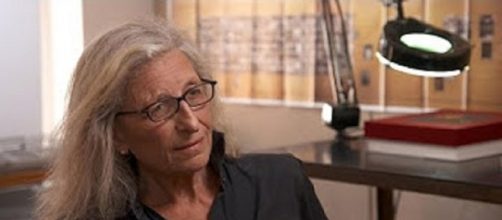Some would find it odd that Annie Leibovitz doesn’t have her own magazine covers of classic portraits from the rock 'n roll and celebrity worlds filling the walls of her New York apartment. Even that private space is very much a working landscape for the woman who was designated to be a living legend -officially - by the Library of Congress in 2000. Annie Leibovitz is as much a part of every rock 'n roll dream as Rolling Stone itself, or the iconic Rolling Stones, who adored the photographer so much that they asked her to trade the magazine for their band.
She did, for awhile, and the stint brought unforgettable portraits, worldwide acclaim, and a demon she never anticipated.
Annie Leibovitz doesn’t rely on barter for sustenance these days, but her life has been rife with unexpected delights, ecstasy, and the depths of loss. Her love for the glimpses she captures from her lens still inspires her beyond measure, as she shared with Charlie Rose on “CBS This Morning” on October 25. No longer wide-eyed by any subject, she celebrates herself as an artist who embraces her gift with her instrument.
The royal and music royalty
Before her sit-down started, Annie was as exhilarated as a teenager, guiding “her Majesty” the Queen of England, in nodding this way and that for a portrait.
In perfect accent, Leibovitz shares her royal subject’s admonition to “find your own way” when she relates that shooting this stately portrait session reminds her of Cecil Beaton. Historic figures fill the mind of the photographer, who describes that she is like “an encyclopedia inside.”
Annie Leibovitz understands how fate can step in to change a life or a nation.
When she planned her latest portrait collection, spanning 2005-2016, she already had in mind the last photograph, one of Hillary Clinton, studious and quiet in her library. Then the vote was revealed, and the last 20 pages of the book exhibited her sense of “not knowing where to go, what to do” like many others in a state of a stammer.
She started “throwing in” Oprah, Kate McKinnon, Bruce Springsteen, and more. It became odd how the unplanned assortment spoke of the times.
At 20, Annie Leibovitz and her camera blended right in as she soaked up the San Francisco counterculture for posterity. In just three years, at 24, she was the chief photographer for Rolling Stone under Jann Wenner.
Annie confesses to being awestruck when she was asked to be tour photographer for the Rolling Stones, twice, in 1972 and 1975. “I couldn't believe…. Everything that I was walking into,” she pensively explains.
No matter how much Rose prodded, Annie Leibovitz would never concede to any notion that she was “hanging out” with the band. She had her own serious issues and her camera meant survival.
Demons and devotion
Coming off her heady assignment, Leibovitz was afflicted with her own drug addiction that would take three years to beat. The woman who captured both John Lennon and Yoko Ono and Paul and Linda McCartney in cover poses that are etched into modern and musical consciousness said, “I held onto my camera for dear life, because it scared the hell out of me.”
The love of a good woman was salvation for Annie Leibovitz, too, along with her three daughters. The depth of her relationship with writer Susan Sontag spurred her on in recovery and the recognition of all her work meant. There was certainty that “I'm gonna have to get good,” as Annie relates. “This is what it's gonna be to know Susan.
She was tough.” Their devotion was chronicled in moving black and white images, too, right up until Sontag’s death from cancer in 2004.
Not only was the fateful ending of that 15-year, loving relationship a heartache to endure, but Leibovitz also lost both her parents and wound up in millions of dollars of debt in the same year. She is matter-of-fact about the hardship now, reflecting on all it taught her about life and being on top of business affairs. Noting correctly that “I work really hard,” she simply says “I picked it all up and put it back together.”
At 68, Annie Leibovitz has been seasoned by life's sweetness, sadness, and adventure, but she still insists “I eat it up,” referring to her art with the lens, and no matter the subject, she still makes magic.


